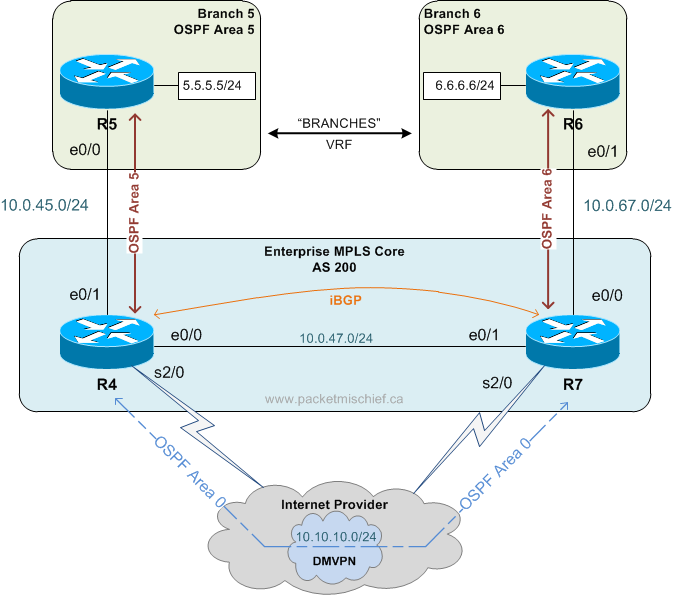As I've written about previously (The Importance of BGP NEXT_HOP in L3VPNs), the BGP NEXT_HOP attribute is key to ensuring end to end connectivity in an MPLS L3VPN. In the other article, I examine the different forwarding behavior of the network based on which of the egress PE's IP addresses is used as the NEXT_HOP. In this article I'll look at the subnet mask that's associated with the NEXT_HOP and the differences in forwarding behavior when the mask is configured to different values.
There is a lot of (mis-)information on the web stating that the PE's loopback address — which, as I explain in the previous article, should always be used as the NEXT_HOP — must have a /32 mask. This is not exactly true. I think this is an example of some information that has been passed around incorrectly, and without proper context, and is now taken as a rule. I'll explain more about this further on in the article.
